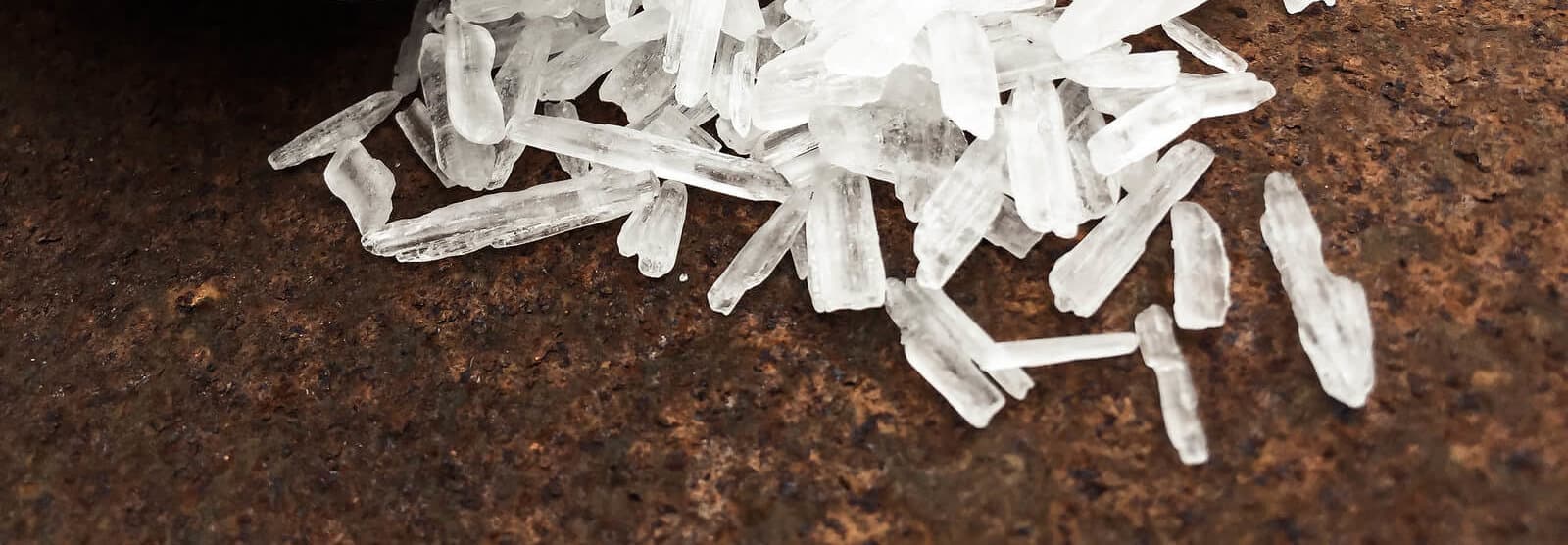
Meth addiction is among the most prevalent drug abuse menaces in America. It has led to the overdoses of thousands, has ravaged communities in all regions of the U.S., and has contributed to a significant increase in criminal activity.
Illicit meth production process, usually undertaken in dangerous, uncontrolled, and unsanitary clandestine labs, has created public health concern across the entire U.S. Families and loved ones of suspected drug abusers are encouraged to watch for the physical and behavioral signs of meth addiction, which may include the following:
- Significant weight loss
- Dilated pupils
- Hyperactivity
- Irregular sleep patterns
- Decaying teeth and gums, also known as “meth mouth”
- Obsessive and possibly psychotic behavior
- Extreme fluctuations in energy levels
- Secretive and paranoid behavior
How Meth Impacts the Brain and Body
Meth use, whether prescription or illicit, can cause severe mental and physical health complications in both short-term and long-term meth users. Meth abuse hijacks a person’s entire life, while adversely affecting their physical appearance and causing brain damage that may be irreversible.
The effect of meth that is appealing to users is the immediate rush of pleasure, followed by prolonged feelings of boundless energy and euphoria. It also provides users with a sense of confidence, alertness, and focus. While many drugs and enjoyable activities release dopamine in the brain, the amount released when using meth is unmatched and produces a high that can last as long as 12 hours.
Each use of meth, however, generates a less intense high than the previous one, driving users to take more. When the desired effects wear off, users may encounter extreme depression or hopelessness and feel the need to take more to avoid the impending “crash.”
Extended meth abuse alters the brain chemistry of users, damaging the brain’s pleasure center and making it very difficult to experience any pleasure aside from meth use. Research has shown that this process can sometimes be reversed after use has been discontinued. Sadly, however, a complete restoration of tissue and function is unlikely, and any loss of cognitive capabilities may be irreversible.
Tweaking
Another sign of meth addiction is hyperactive, obsessive, impulsive, and even aggressive and violent behavior. Meth is a stimulant that prompts the brain to produce high doses of adrenaline, thereby also creating anxiety and highly-focused attention. This state is also known as tweaking, and psychotic behavior, paranoia, delusions, hallucinations, and aggression are associated with excessive and chronic use.
Tweaking is a physical and psychological condition that may occur following a binge, in which a person dependent on meth is no longer able to experience a high. During this time, the person will have intense cravings and a desperation to get high that can no longer be sated. It is at this point that the aforementioned psychotic symptoms can manifest.
During tweaking, some users also hallucinate the sensation of insects crawling under their skin, a strange condition known as formication. People who are suffering from formication often pick at their skin obsessively, causing sores to form.

Meth Makes Users Less Attractive
Meth abuse destroys blood vessels and tissue and limits the body’s ability to heal itself. Blood flow throughout the body is constricted and eventually cut off. Also, because meth use instills users with a high amount of energy and suppresses appetite, subsequent profound and unhealthy weight loss can make meth users look gaunt, sickly, and frail.
People who use meth for an extended period may appear many years or even decades older than they really are. Tooth grinding (bruxism) combined with dry mouth, poor hygiene, and insufficient diet makes circumstances worse, with users having mouths riddled with discolored, broken, and rotting teeth.
Sex Drive Increases as Inhibitions Decrease
An increased sex drive combined with impaired judgment places many meth abusers at high risk for engaging in impulsive sexual encounters. Meth is also considered an aphrodisiac. The excessive release of dopamine and other neurotransmitters heightens sexual desire and boosts adrenaline and stamina.
During this time, the brain’s feel-good chemicals are at work prompting users to take part in behaviors they likely would not engage in while sober, including unprotected sex and having intercourse with multiple partners. This behavior is especially dangerous because it’s relatively common for meth users who inject to share needles, which can facilitate the spread of sexually transmitted diseases, such as hepatitis or HIV.
Getting Help for Meth Addiction
Meth abuse and addiction are devastating conditions that adversely affect the health and well-being of those suffering, as well as profoundly impact the lives of those around them. Fortunately, meth addiction is treatable, and through the use of an integrated approach to substance abuse, former meth users can achieve sobriety and restore mental and physical wellness to their lives.
If you or someone you love has developed an addiction to meth, please contact Harmony Treatment and Wellness as soon as possible to discuss treatment options. We are waiting to help you recover from addiction and reclaim the joyful and fulfilling life you deserve!